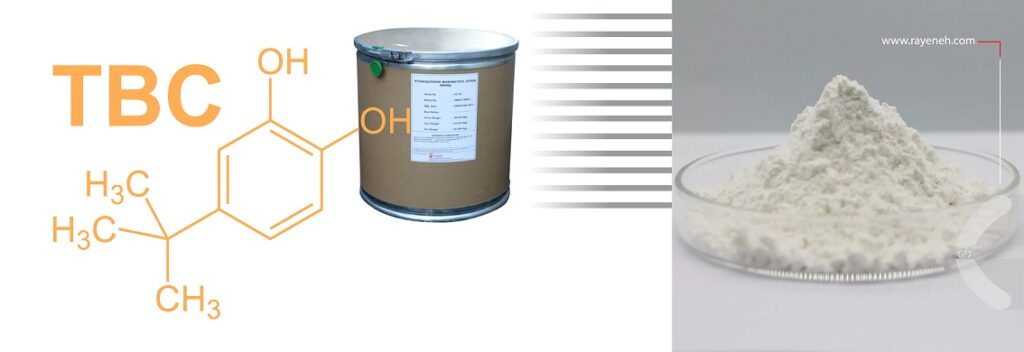
TBC is a divalent phenolic derivative. TBC is produced from the reaction of catechol and a gaseous reactant such as isobutylene gas in the presence of an acid catalyst such as sulfuric acid or Lewis’s acid such as AlCl3, BF3, HF and H3PO4.
This reaction is of the Friedel-Crafts type and is based on the formation of carbocation of the third type.
The formed ion attacks the aromatic ring and the product is formed.
A non-mineral catalyst is used in the production of this material, which has more advantages than mineral-based acid catalysts in many ways.
This catalyst is a type of ion exchange resins and is used in many reactions and has many applications in the oil and petrochemical industries.
This catalyst is a copolymer of styrene and divinylbenzene, which is obtained from the polymerization of the mixture of these two single parts in the presence of a radical initiator such as benzoyl peroxide and then the sulfonation of the reaction mixture.
This substance is mainly used as an inhibitor of polymerization of monomers such as styrene, butadiene and vinyl acetate.
| Properties | Value |
|---|---|
| Molecular mass | 166.217 g/mol |
| Melting Point | 50 °C |
| Boiling temperature | 285 °C |
| Appearance | yellow flakes or 85% solution in methanol |
Application
- As an antioxidant in greases and industrial oils
- Styrene, vinyl acetate and butadiene polymerization inhibitor
- Active and thermal stabilizer
Packing
This chemical is supplied in bulk or barrel ( liquid) and 25 kg bags ( solid).
Chemical Formula
- C10H14O2
Other names
- TBC, para-tert-Butylcatechol
- p-tert-Butylcatechol
- t-Butyl catechol
- p-t-Butylpyrocatechol
- p-tert-Butylpyrocatechol
- 4-t-Butylpyrocatechol
- 4-tert-Butylpyrocatechol
